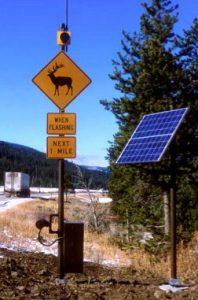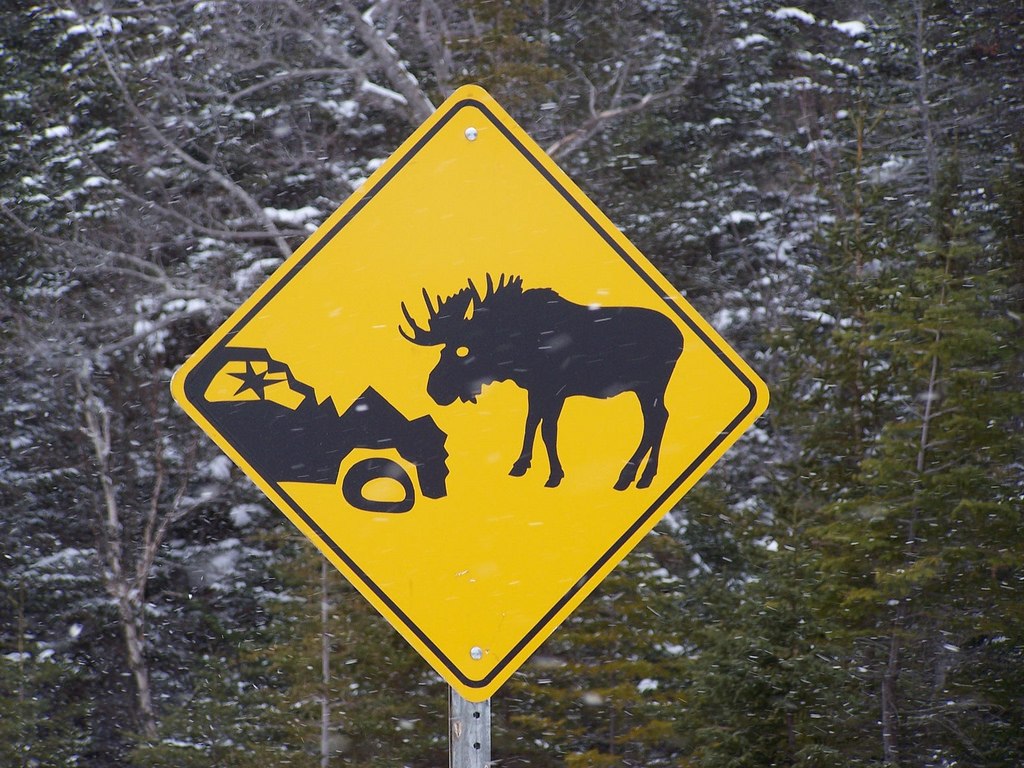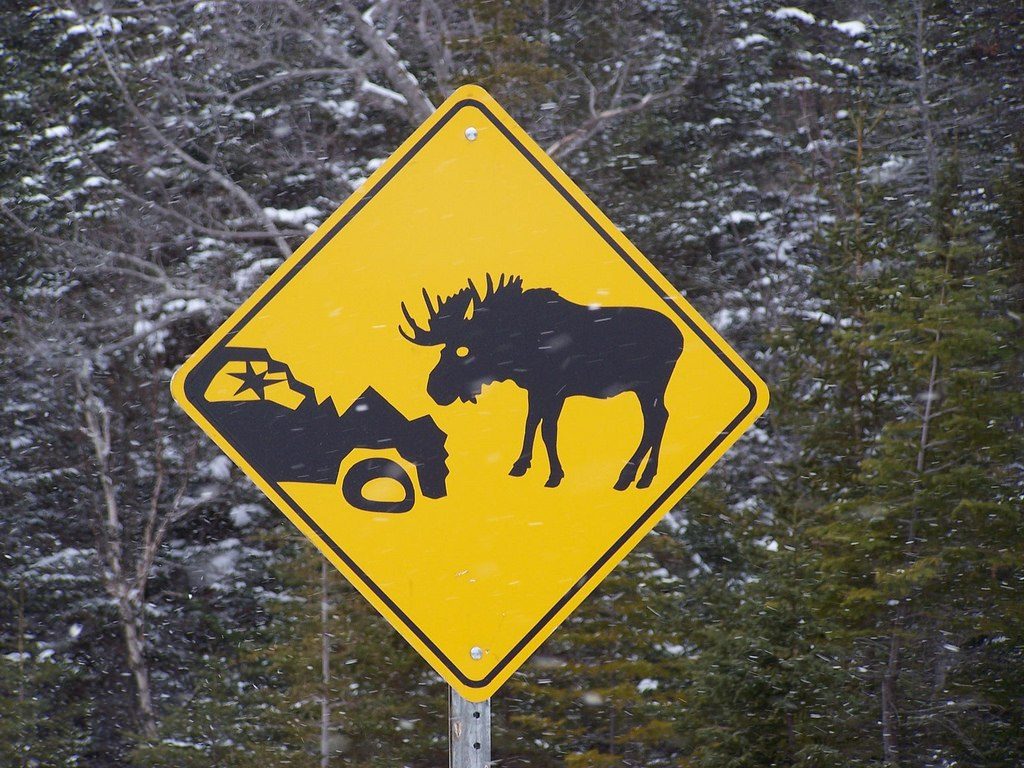According to a study by the Western Transportation Institute at Montana State University, the financial benefits of installing an Animal Detection System are greater than the costs in areas where there is an average of two moose collisions per mile of road length in a year.
With the rapidly decreasing population of Moose who live on Teton Pass, perhaps we can create a detection system for public benefit at a cost far less than the $750,000 spent my governments in the past?
Is this better than a sign that says Moose Crossing? Maybe.
Over the last decade, governments have begun overspending on systems that ocassionally trigger a yellow flashing light.
If the light is only flashing some of the time, perhaps drivers will take it more seriously when the lamp is lit.
Laser Tripwire Systems
 The first animal detection systems installed along highways use infrared lasers, detecting animals greater than 30″ in height. The system is triggered whenever the invisible laser is broken, requiring multiple installations along the side of the pass, as this method requires line-of-sight in order to function.
The first animal detection systems installed along highways use infrared lasers, detecting animals greater than 30″ in height. The system is triggered whenever the invisible laser is broken, requiring multiple installations along the side of the pass, as this method requires line-of-sight in order to function.
When the system is triggered, lights flash alerting drivers of wildlife in the area.
Laser Tripwire systems are prone to alerting drivers to false positives. False positives could be caused by shrubs, grass, and even blowing snow. To be clear, this only means that the alert light will be flashing during these false positives.
Radar Detection Systems
Due to false positives, some areas have turned to radar detection systems. It’s unclear at this time whether or not the radar-based systems have proven any better than the laser-based systems.
Conclusion
- Automated systems that trigger a light when they detect what could be an elk, deer, or moose are effective at reducing the number of collisions.
- Early data shows that traffic speeds have been decreased by 15% when these systems are active
- Two moose collisions per mile per year is the point where cost is effectively lower to purchase a system at retail cost.
- We have the technology and the know how to build this sort of system at a fraction of the cost that other municipalities have paid for these types of improvements.
Further Reading
Detection Systems Reduce Collisions with Wildlife on Rural Highways
Safety Roadside Wildlife Detection Systems Expanding in North America


